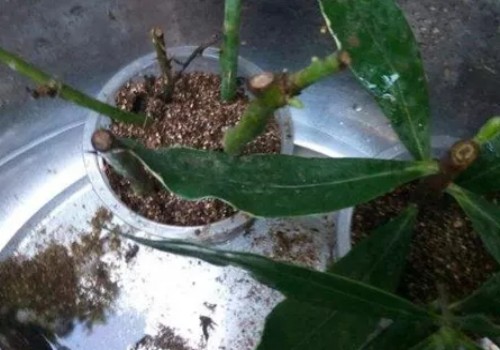How to cut Daphne odora in Phnom Penh
Phnom Penh Daphne is a very fragrant flowering plant, because of its high ornamental value, at the same time has a certain shade tolerance, but also likes the bright light, smooth ventilation of the semi-shade environment, so it is very suitable to be raised indoors near the windowsill as a potted plant. This is not only for appreciation, but also makes the room full of fragrance, which is very practical.

Not only that, Phnom Penh Daphne has a strong ability to adapt to the environment, but also has the characteristics of easy reproduction and simple maintenance. Especially cutting propagation, as long as the temperature is relatively suitable for the environment, it is easy to take root and survive. So, how does Phnom Penh incense cuttage? Today, the editor will simply share with you the cutting propagation method of Phnom Penh Daphne.
I. preparation of substrates
Phnom Penh Daphne likes the slightly acidic sandy loam which is fertile and loose, permeable and permeable. It generally uses rotten leaf soil, garden soil and sandy soil to prepare a mixed substrate for cutting propagation. You can also use laterite, rotten leaf soil and river sand or pond mud, humus and river sand to form a mixed matrix. In order to improve the fertility of the substrate, we can also add a little cake fertilizer as the base fertilizer in the mixed soil to ensure that the cuttings can get sufficient nutrients from the soil to maintain their growth.
2. Cutting cuttings
For the cutting of Phnom Penh Daphne, it is appropriate to choose semi-lignified or lignified branches as cuttings, and it is most appropriate to control the original length at about 10 cm. However, it is suggested that the lower end of the cuttings be cut into a smooth slope, or the lower port be cut into two tapered wedges to increase the contact area with the substrate, so as to better promote the rooting of the base. Two or three halves of leaves can be kept above the branches for photosynthesis, and then the cuttings are set aside to dry the wound.
3. Cutting process
When the wound on the cuttings of Daphne odorifera in Phnom Penh condenses and dries, apply a little rooting agent to the end of the cuttings, or soak it in a rooting solution. Then insert the cuttings into the cutting substrate, and the insertion depth should be controlled at about 2-3 cm. Finally, after watering, the cuttings will be placed in a semi-shady place with sufficient scattered light for maintenance, during which attention should be paid to moisturizing work, which will take about 3 weeks to take root.
IV. Maintenance and management
When Phnom Penh Daphne takes root and survives smoothly, in addition to light and temperature management, it is also necessary to do a good job in watering and fertilization management. But watering can not be too frequent, you can water at most once a day, because if the soil is too wet or stagnant for a long time, it is easy to cause rotten roots. Fertilization also needs to be decided according to the growth of cuttings, and potassium dihydrogen phosphate solution can be sprayed once in the evening to promote root growth.
Fifth, transplant into the pot
When the root system of Phnom Penh Daphne incense cuttings is strong and sprouting, we choose a suitable weather environment and time to transplant into the pot. However, before planning to transplant into the pot, it is recommended to fertilize it again in advance. After finishing the pot, you still need to put the potted plants in a cool place to slow down the seedlings and provide them with a little scattered light at most. Wait for the plant to take the pot smoothly, and then return to normal maintenance and management.
Time: 2019-06-05 Click:
- Prev

The best cutting time of Phnom Penh Daphne odora
Ruixiang blossoms very beautifully, especially in Phnom Penh. When it comes to the blooming season, you can smell its rich fragrance from afar. Phnom Penh Daphne is not only elegant in color, but also very mellow in fragrance. it is a kind of flower plant with both shape, color and fragrance, which is very suitable for potted cultivation.
- Next

High-altitude striping propagation of plum blossom
Plum blossom not only has a wide variety, but also has different colors, but it usually exudes a pleasant fragrance. As the plum blossom is beautiful, fragrant and powerful, it is very suitable for potted cultivation, and can even be made into a bonsai masterpiece. And for most plum blossom varieties
Related
- Fuxing push coffee new agricultural production and marketing class: lack of small-scale processing plants
- Jujube rice field leisure farm deep ploughing Yilan for five years to create a space for organic food and play
- Nongyu Farm-A trial of organic papaya for brave women with advanced technology
- Four points for attention in the prevention and control of diseases and insect pests of edible fungi
- How to add nutrient solution to Edible Fungi
- Is there any good way to control edible fungus mites?
- Open Inoculation Technology of Edible Fungi
- Is there any clever way to use fertilizer for edible fungus in winter?
- What agents are used to kill the pathogens of edible fungi in the mushroom shed?
- Rapid drying of Edible Fungi

